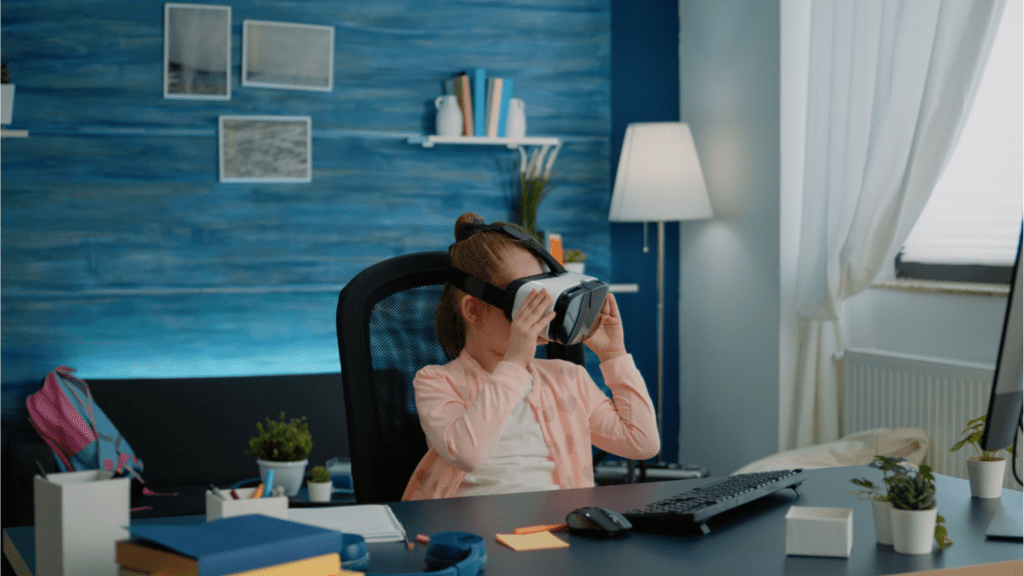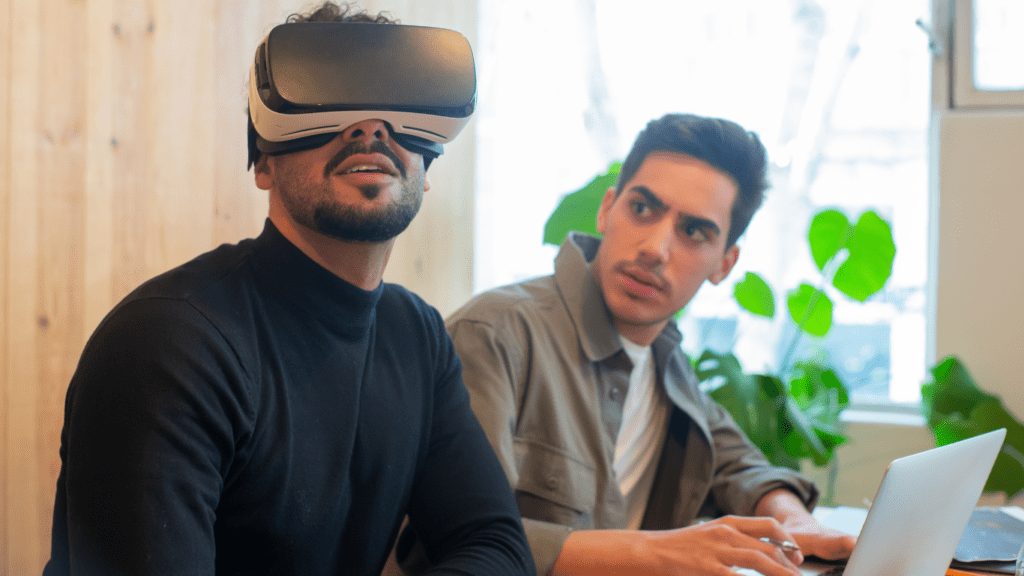The Rise of Virtual Reality in Marketing
Virtual Reality (VR) has gained significant traction in marketing over recent years. Many companies are now leveraging VR to enhance consumer engagement. According to Statista, the VR market is projected to reach $62.1 billion by 2027, underscoring its fast-growing adoption. This rise can be attributed to multiple factors.
First, immersive experiences brought by VR captivate audiences more effectively than traditional media. Brands like IKEA and Audi use VR to offer virtual store tours and car test drives. These interactive demos give potential customers a hands-on feel of their products.
Second, VR allows personalized marketing at a level never possible before. It’s no longer about generic ads; instead, users can explore tailor-made experiences that cater to their preferences. For instance, Marriott Hotels provides virtual tours of their locations, letting users visualize their stay before booking.
Third, VR’s data collection capabilities provide new insights into consumer behavior. Marketers can now track user interactions in virtual environments, informing better-targeted campaigns. For example, heatmaps in VR environments help determine which features grab attention most.
Fourth, VR strengthens brand storytelling. By immersing users in branded worlds, companies can convey their messages more compellingly. Pepsi’s VR campaign during the Super Bowl showcased a futuristic football game, creating a memorable brand association.
Lastly, the advent of affordable VR headsets makes technology more accessible to consumers and businesses alike. Oculus Quest 2’s price-point lowers the barrier to entry, allowing more widespread adoption and innovative marketing campaigns. Companies see the potential ROI from investing in VR, driving its rise in the marketing landscape.
This burgeoning trend shows no signs of slowing as technology continues to evolve.
Benefits of Using Virtual Reality in Marketing
Virtual reality is bringing significant advantages to the marketing landscape, revolutionizing how brands connect with their audience. Let’s explore three major benefits—enhanced customer experience, improved customer engagement, and data-driven insights.
Enhanced Customer Experience
Virtual reality enhances customer experience by allowing users to interact directly with products or services in a simulated environment. This interactive and immersive method helps consumers make informed decisions. For example, IKEA’s virtual store tours let shoppers visualize furniture in their homes, enhancing the shopping experience. By offering these lifelike simulations, brands can reduce return rates and boost customer satisfaction.
Improved Customer Engagement
Virtual reality substantially improves customer engagement by captivating users with immersive content. When customers participate in VR experiences, they are more likely to remember the brand. Audi’s virtual test drives offer an unparalleled way for potential buyers to experience vehicles, leading to higher engagement and conversion rates. VR’s ability to create memorable interactions helps brands stand out in a crowded market.
Data-Driven Insights
VR technology provides valuable data-driven insights by tracking user behavior in virtual environments. Brands can analyze these interactions to understand consumer preferences and optimize marketing strategies. Marriott Hotels use VR tours not just to impress potential clients but also to gather data on most viewed areas and frequently asked questions. This data helps marketers tailor future campaigns to meet customer expectations better.
Key Virtual Reality Technologies in Marketing

Virtual Reality (VR) has introduced several transformative technologies that enhance marketing strategies. These innovations provide immersive experiences, helping brands connect deeply with consumers.
VR Headsets
VR headsets, like the Oculus Quest 2 and HTC Vive, deliver immersive experiences by transporting users to virtual environments. Brands leverage these headsets to create engaging marketing campaigns. For instance, Audi uses VR headsets for virtual test drives, allowing potential buyers to experience driving before making a purchase. Similarly, Marriott Hotels offers virtual tours via headsets, enabling users to explore their destinations fully.
360-Degree Videos
360-degree videos immerse viewers in a complete spatial experience, making them feel as if they are inside the scene. Platforms like YouTube and Facebook support these videos, extending their reach. IKEA utilizes 360-degree videos to offer virtual tours of their stores, creating an engaging shopping experience. These videos capture attention better than traditional formats, significantly increasing engagement rates.
Augmented Reality (AR) vs. Virtual Reality (VR)
Understanding the differences between AR and VR is crucial. AR overlays digital elements onto the real world, enhancing rather than replacing the user’s surroundings. Snapchat and Instagram use AR filters to engage users meaningfully. In contrast, VR creates a completely immersive environment, replacing the physical world with a virtual one. While AR enriches reality, VR transports users entirely, offering more profound immersive experiences helpful for virtual tours and product demonstrations.
Both AR and VR contribute uniquely to marketing. AR excels in interactive elements, useful for social media campaigns and mobile apps, as evidenced by the success of AR filters. VR, on the other hand, offers full immersion, beneficial for in-depth experiences like virtual showrooms and events. Brands can choose the most suitable technology based on their campaign goals.
Successful Case Studies in VR Marketing
I’ve seen several industries harness the power of Virtual Reality (VR) to transform their marketing strategies, achieving impressive results.
Automotive Industry Examples
Automotive brands like Audi and Volvo have utilized VR to provide virtual test drives. Audi offers a VR experience where customers can test drive various models in different environments, enhancing user engagement by allowing potential buyers to immerse themselves in an interactive driving experience. Volvo’s “Volvo Reality” campaign lets users virtually explore the XC90 SUV, providing a comprehensive view of the vehicle’s features and performance.
Retail Industry Examples
Retailers have effectively integrated VR into their marketing campaigns to provide enhanced shopping experiences. IKEA’s “IKEA Place” app allows users to virtually place furniture in their homes, helping them visualize how products fit in their spaces. This reduces return rates and increases customer satisfaction. Similarly, Nike uses VR to let customers try on sneakers virtually, improving engagement and driving sales.
Real Estate Industry Examples
The real estate industry has adopted VR to offer virtual property tours. Companies like Zillow and Matterport provide VR walkthroughs of homes, enabling potential buyers to explore properties without needing to visit in person. This technology aids in decision-making by offering a realistic view of properties. Sotheby’s International Realty uses VR to showcase luxury properties, attracting clients worldwide with immersive virtual tours.
Challenges and Limitations of VR in Marketing
Adopting Virtual Reality (VR) in marketing comes with significant challenges that can hinder its implementation. Despite its potential, several factors limit its widespread use.
High Development Costs
VR marketing campaigns entail high initial investment. Creating immersive environments and interactive content requires:
- advanced software
- skilled developers
- specialized hardware
For example, developing a high-quality virtual store can cost tens of thousands of dollars. Smaller businesses may find these costs prohibitive compared to traditional marketing methods.
Technical Limitations
- VR technology faces several technical constraints, impacting user experience.
- High-resolution graphics and smooth animations demand powerful hardware.
- Many consumers lack access to the latest VR headsets capable of delivering these experiences.
- Issues like motion sickness affect a portion of users, reducing usability.
- Ensuring compatibility across various platforms and devices further complicates VR implementation.
Adoption Challenges
Widespread VR adoption in marketing encounters resistance from both consumers and businesses. Many users are unfamiliar with VR and hesitant to invest in the necessary equipment. Businesses also need to allocate resources for training staff and supporting VR initiatives. Moreover, the learning curve for creating and managing VR content can be steep, deterring companies from fully embracing the technology.
Future Trends in Virtual Reality Marketing
As VR continues transforming marketing, several key trends are emerging to shape its future. These trends promise to enhance customer experiences further and expand VR’s applicability across various industries.
Integration with Artificial Intelligence
Integrating AI with VR is set to revolutionize marketing by providing more personalized and efficient experiences. AI algorithms can analyze large datasets to predict consumer behavior, allowing VR environments to adapt in real time. For example, AI can adjust virtual store layouts based on user preferences, enhancing engagement. Amazon uses AI-driven VR to offer personalized shopping experiences, showcasing relevant products to users.
Personalized Customer Experiences
Personalized customer experiences in VR environments are becoming increasingly sophisticated. By leveraging data analytics, brands can create tailored VR experiences that cater to individual preferences. For instance, beauty brands use VR to offer virtual try-ons, allowing customers to see how products look on them in a simulated environment. This individualization not only boosts customer satisfaction but also drives higher conversion rates.
Expansion into New Industries
VR is not just for retail and automotive anymore; it’s expanding into new industries. Healthcare providers use VR for patient education and therapy sessions, while educational institutions employ VR for immersive learning experiences. For example, VR companies like Osso VR enhance surgical training, providing realistic simulations for medical professionals. This expansion underscores VR’s versatility and its potential to innovate marketing strategies across various sectors.



